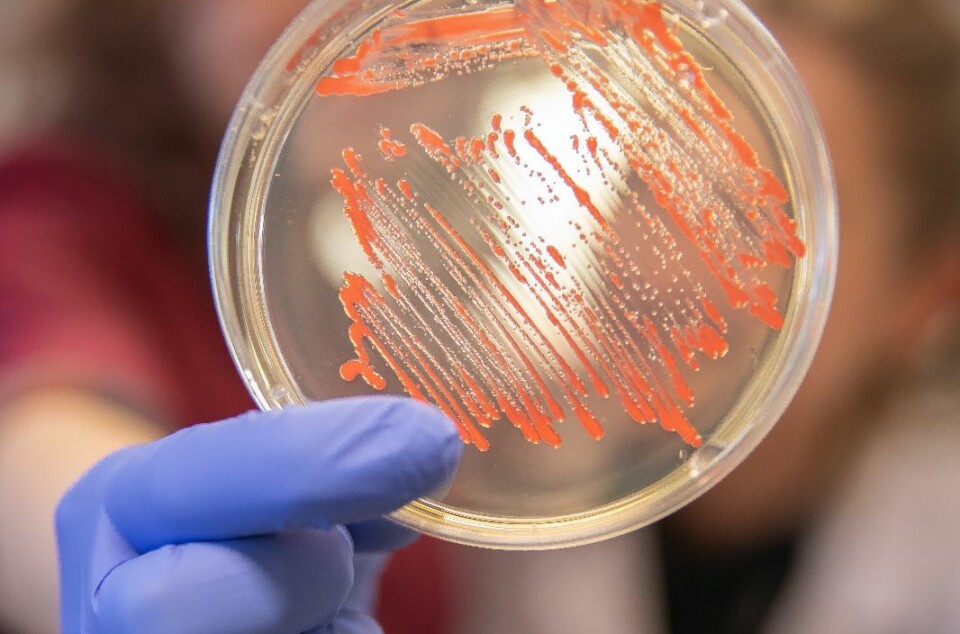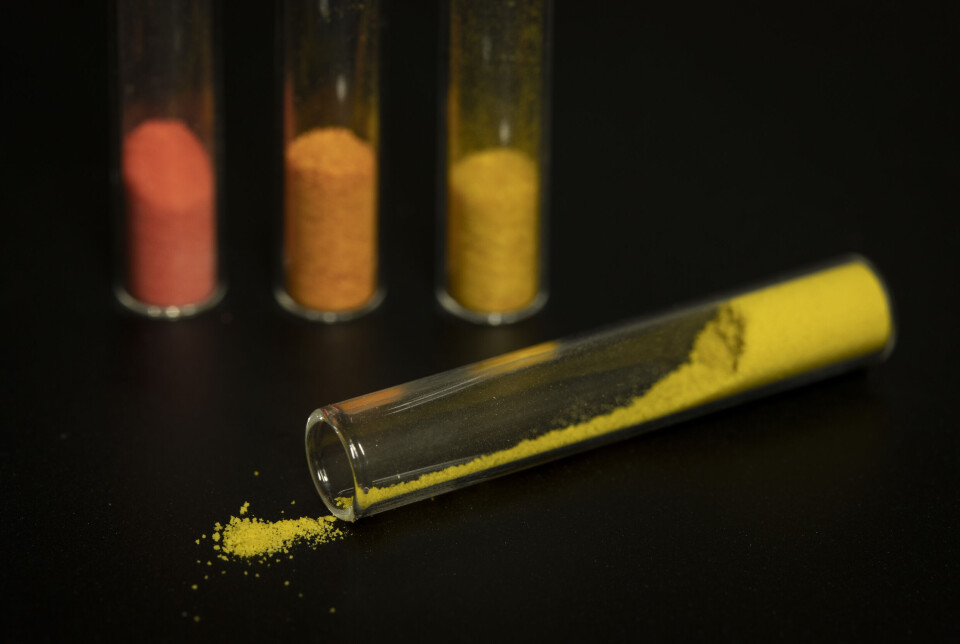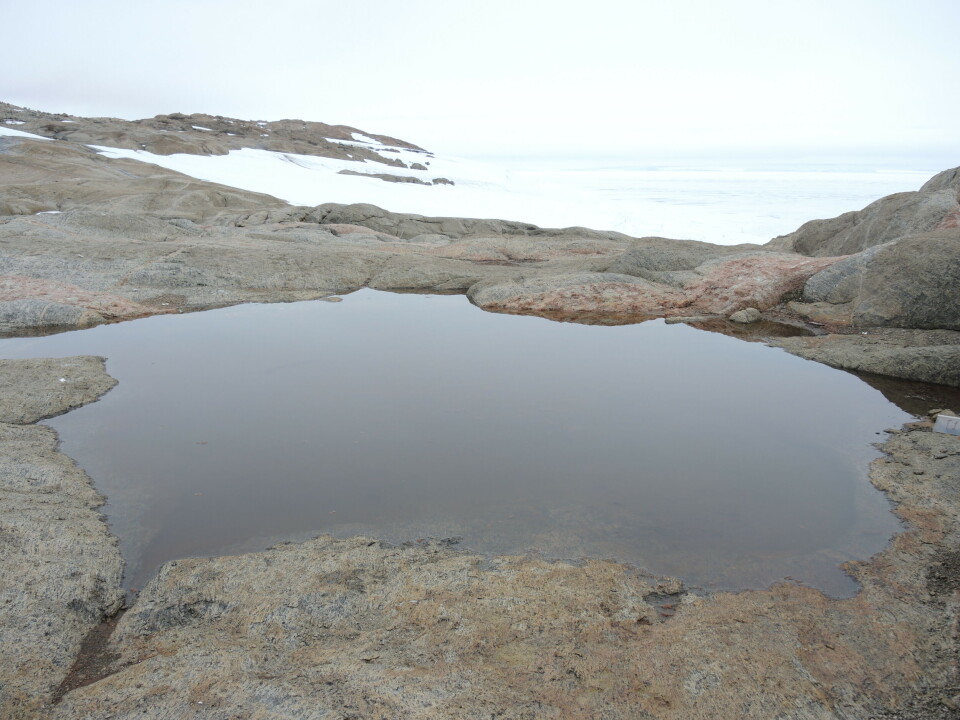THIS CONTENT IS BROUGHT TO YOU BY the Norwegian University of Life Sciences (NMBU) - read more

Exploring bacteria in Antarctic meltwater ponds
These meltwater ponds are full of bacteria – both useful and dangerous.
Volha Akulava, a PhD candidate at the Norwegian University of Life Sciences (NMBU), has researched the bacteria found in Antarctic meltwater ponds. They can be used to understand and predict climate change in Antarctica.
“Antarctic meltwater ponds are unique unexplored biotopes characterised by a high complexity of microbiota and affected by ever-changing ecological factors,” Akulava says.
Meltwater bacteria can help produce valuable chemicals
“The bacteria are interesting because they can survive in very cold temperatures. So they can be used to study how organisms adapt to climate change. They could also be used to produce valuable chemicals, such as pigments and lipids,” Akulava says.
The bacteria Akulava worked with came from water samples from unexplored meltwater ponds in the Thala Hills Oasis in East Antarctica.
Akulava found that the water was alkaline and full of active bacteria. She identified 29 different bacteria, belonging to 12 different groups.
The most common group was Pseudomonas. Many of these bacteria can produce pigments and enzymes, which is useful for a broad range of industries.

Some bacteria were also resistant to antibiotics.
“This could be connected to animals living close to the ponds,” Akulava says.
As the climate in Antarctica rapidly changes, these bacteria could contribute to spreading multi-resistant genes.
However, these bacteria can also help us track the spread of antibiotic resistance and help us learn more about the impact of humans or animals in polar areas.
Changes in temperature affect the bacteria
Akulava looked at how the bacteria change their cell lipids, which are fats and oils, to survive in different temperatures. Her work shows that the bacteria can change their chemistry to survive in different temperatures.
“Most bacteria increased their lipid content when grown at lower temperatures. Changes in temperature can also affect other parts of the bacteria, such as their proteins and polysaccharides,” she says.
Polysaccharides are a type of carbohydrate. They are polymers composed of many sugar molecules joined together. Diverse bacteria make and store polysaccharides either inside their cells (like glycogen) or outside (for example, alginate and cellulose).

Akulava then looked at how the bacteria's overall chemistry changes when they are grown at different temperatures and in different types of culture mediums.
Culture mediums, also called growth mediums, contain nutrients that are important for bacterial growth.
“The biggest changes were seen in bacteria that can grow in a wide range of temperatures. Lipids were least affected by temperature changes, while polysaccharides were most affected,” she says.
Bacteria produce valuable pigments
Akulava found that some of the bacteria from the meltwater ponds produce pigments – or dyes. Some of these pigments, such as β-carotene, canthaxanthin, lycopene, and zeaxanthin, are used in several industry applications.
Akulava also tested how some of these pigments react to blue light and how stable they are in sunlight, which is important if they are to be used in solar cells.
In this work, she used vibrational spectroscopy to obtain the complete chemical fingerprint of bacteria. This approach proved highly effective to evaluate biotechnological importance of newly isolated Antarctic bacteria.
Akulava’s work presents a foundation for further exploration of Antarctic cold-adapted bacteria for biotech applications. It also highlights the value of vibrational spectroscopy techniques for bioprospecting of microorganisms from new environments.
References:
Akulava et al. Explorative characterization and taxonomy-aligned comparison of alterations in lipids and other biomolecules in Antarctic bacteria grown at different temperatures, Environmental Microbiology Reports, vol. 16, 2024. DOI: 10.1111/1758-2229.13232
Akulava et al. Isolation, Physiological Characterization, and Antibiotic Susceptibility Testing of Fast-Growing Bacteria from the Sea-Affected Temporary Meltwater Ponds in the Thala Hills Oasis (Enderby Land, East Antarctica), Biology, vol. 11, 2022. DOI: 10.3390/biology11081143
Akulava et al. Screening for pigment production and characterization of pigment profile and photostability in cold-adapted Antarctic bacteria using FT-Raman spectroscopy, Journal of Photochemistry and Photobiology A: Chemistry, vol. 450, 2024. DOI: 10.1016/j.jphotochem.2024.115461
More content from NMBU:
-
Shopping centres contribute to better health and quality of life
-
We're eating more cashew nuts – and the consequences are serious
-
Do young people with immigrant parents have better health?
-
Who’s picking your strawberries this summer?
-
Can coffee grounds and eggshells be turned into fuel?
-
Rising housing costs fuel inequality in Norway





































